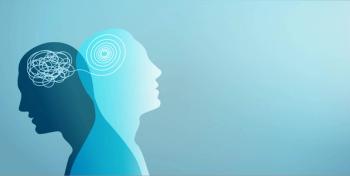
- Vol 32 No 6
- Volume 32
- Issue 6
Tectonic Shift in the Conception of Bipolar Disorder
A beautifully detailed algorithm for treatment options in bipolar disorder is described.
[[{"type":"media","view_mode":"media_crop","fid":"38388","attributes":{"alt":"Terence-Mendoza-shutterstock","class":"media-image media-image-right","id":"media_crop_3001469650029","media_crop_h":"0","media_crop_image_style":"-1","media_crop_instance":"3866","media_crop_rotate":"0","media_crop_scale_h":"200","media_crop_scale_w":"133","media_crop_w":"0","media_crop_x":"0","media_crop_y":"0","style":"float: right;","title":"Terence-Mendoza/shutterstock.com","typeof":"foaf:Image"}}]]As a fourth-year psychiatry resident, the thought of completing training and entering the “real world” can be quite daunting. For me, a symposium at APA 2015, “Evidence-Based Psychopharmacology: Algorithms to Guide Clinical Decisions for Treating Bipolar Disorder,” translated into “if you’re worried about making mistakes, follow these key points and you should at least be okay for treating patients with bipolar disorder.”
Walking into the symposium, I figured we would simply be following along some type of flow diagram or decision tree. What I didn’t see coming was a tectonic shift in my conception of the disorder-particularly the depressed phase.
From the first day of training, we are repeatedly cautioned about the use of antidepressants in patients with bipolar disorder and the risk of causing a switch from a depressed phase into a manic phase. The state of irritability, impulsivity, poor judgment, and potential compromise in reality testing is feared for its potential to bring harm to the patient and to others. While the manic phase is arguably the “sexier” of the two poles, we may not always focus closely enough on the target of euthymia instead of simply “getting out of mania.” This may have been the first time I can recall being formerly cautioned about causing a switch from a manic to a depressed state.
Patients can be weighed down with the negative emotional and cognitive cloak of depressed mood while still having the leftover goal-directed and physical energy of the manic phase from which they came. This can be disastrous for obvious reasons. We may have helped our inpatients out of a manic phase before they are discharged. However, the stability we see at this time may be a temporary state and may herald a depressive episode. Thus, it is crucial to have a high level of vigilance for depressed features and to ensure follow-up within 7 days-at which time we can still intervene if needed.
On average, patients with bipolar disorder spend approximately two-thirds of their time in a depressed or euthymic state. Thus, effective treatment of depressive symptoms is paramount to preserving safety and quality of life. To this end, Drs Dana Wang, David Osser, Arash Ansari, and Othman Mohammad presented a beautifully detailed algorithm for treatment options-for the depressed phase of the illness as well as the manic phase.
The algorithms are available on the Psychopharmacology Algorithm Project Web site (
Some of the key points discussed regarding treatment of bipolar depression:
1. Is there a clinical argument for ECT (are patients acutely suicidal)?
• In most cases, patients with bipolar depression require fewer treatments than those with unipolar depression.
2. What is the best option for the patient who demonstrates psychotic symptoms?
• An atypical antipsychotic is preferred for initial mood stabilization. Olanzapine is not the first choice, given its metabolic adverse effects. Typical antipsychotics can increase the risk of depressive symptoms.
3. Initiation of therapy with a mood stabilizer is recommended if the patient is not alreadytaking a mood stabilizer.
• Lithium remains the first choice (barring any contraindications), given its proven efficacy (even as monotherapy) in reducing suicidality and its likely neuroprotective effects (thought to reduce neuronal apoptosis and glutamate-mediated excitotoxicity). The number needed to harm for causing long-term renal impairment is about 300.
• Quetiapine is the next best choice (barring any contraindications) and is FDA-approved for bipolar depression. Evidence demonstrating its use as monotherapy for bipolar disorder is still lacking.
• Lamotrigine is not FDA-approved for acute bipolar depression but is approved for bipo-lar depression maintenance therapy. It has a more favorable adverse-effect profile than many other options and has been shown to increase the time between manic episodes.
• Lurasidone is also a valid option, and it en-joys a more reasonable adverse-effect profile. It has FDA approval for treating bipolar depression. Its relative novelty to many clinicians and fewer number of clinical trials are likely holding it back from receiving even higher recommendations for use.
These points are but a fraction of the suggestions and recommendations for treating this patient population. The speakers covered other topics-including possible treatment options for failed trials, when to augment with a second agent, and the lack of overall clinical evidence to support the use of adjunct antidepressants. These algorithms are wonderful tools for all clinicians because they are based on the scientific evidence available to date.
This article was originally posted on May 20, 2015 and has since been updated.
Disclosures:
Dr Prabhu is Chief Resident in the Department of Psychiatry and Neuroscience at Detroit Medical Center/Wayne State University.
Articles in this issue
over 10 years ago
Introduction: Reflections on the Crossing of Cultures in Psychiatryover 10 years ago
A Tour de Force of the History of Psychiatryover 10 years ago
New Findings About Youth Suicideover 10 years ago
Clinical Considerations in Renal Failure, Depression, and Deliriumover 10 years ago
Can Climate Be Hazardous to Your Mental Health? A View From Historyover 10 years ago
The Most Widely Prescribed Med for Medicare Recipients?Newsletter
Receive trusted psychiatric news, expert analysis, and clinical insights — subscribe today to support your practice and your patients.














